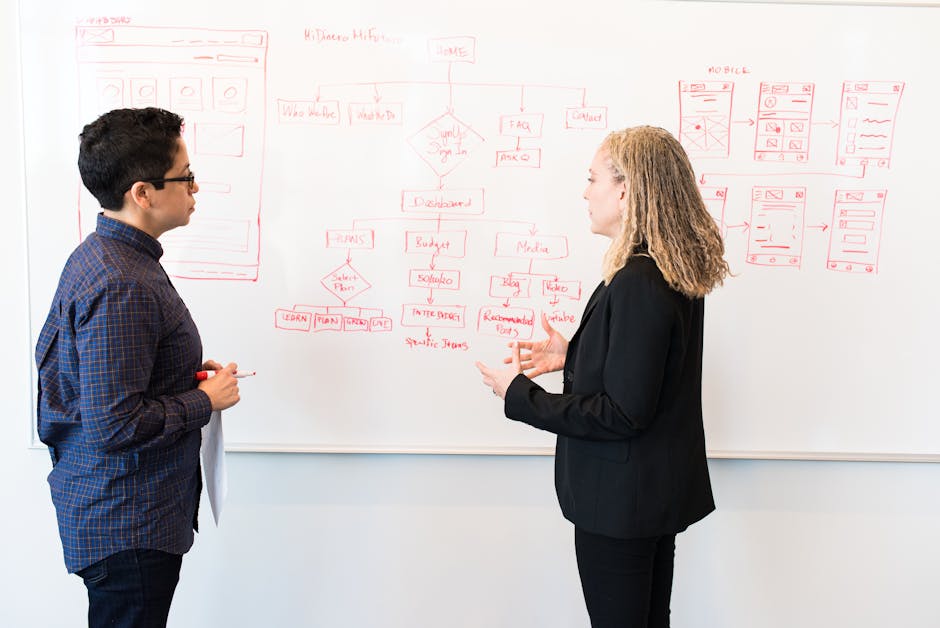Why Prioritise Single Feature App Development?
Imagine you’re in a bustling marketplace, surrounded by venders selling an array of products. Your eyes scan the colourful displays, but what catches your attention is a stand with just one item—a beautifully crafted, unique piece that stands out amidst the chaos.
Just like that standout item in the market, single feature app development focuses on honing in on one specific aspect to create a standout user experience. But why is this approach gaining traction in the world of app development?
Well, the answer lies in the numerous benefits it offers, which can significantly impact the success of your app.
Key Takeaways
- Single feature apps provide a streamlined and focussed user experience, eliminating unnecessary complexity and increasing user satisfaction.
- Prioritising specific user needs through thorough research, personalisation features, and gathering user feedback allows for a more targeted and engaging app.
- Rapid iteration and feedback mechanisms enable swift implementation of changes and enhancements, adapting to user needs and improving user satisfaction and retention.
- Cost-effectiveness and time efficiency can be achieved through prioritising features based on value, utilising agile methodologies, leveraging existing resources, and optimising team collaboration.
Benefits of Single Feature Apps

Single feature apps offer a streamlined and focussed user experience, eliminating unnecessary complexity and allowing for efficient execution of a specific task or function. By honing in on a single function, these apps provide increased engagement as users can quickly accomplish their goals without distractions. This focussed approach also leads to heightened user satisfaction, as individuals appreciate the simplicity and ease of use.
Single feature apps are designed to cater to the specific needs of users, resulting in a more targeted and personalised experience. This tailored approach not only enhances user engagement but also contributes to overall satisfaction with the app. By prioritising a single feature, developers can dedicate their efforts to perfecting that particular function, ensuring a seamless and high-quality user experience.
Moreover, the singular focus of these apps allows for a deep understanding of user behaviour and preferences, enabling developers to continually refine and improve the app to better meet the needs of the users. This iterative process ultimately leads to increased user satisfaction and loyalty.
Targeting Specific User Needs

To effectively target specific user needs, focus on understanding their preferences and behaviours to tailor the app’s functionality. By personalising the user experience, you can significantly enhance user engagement and satisfaction.
Here are some key strategies for targeting specific user needs:
- Conduct thorough user research to understand the preferences and pain points of your target audience.
- Implement personalisation features such as customisable settings, user-specific recommendations, and tailored content delivery.
- Utilise data analytics to track user behaviour and preferences, enabling continuous refinement of the app’s functionality.
- Gather user feedback through surveys, reviews, and direct communication to identify areas for improvement and personalisation.
- Regularly update the app based on user insights, ensuring that it remains alined with evolving user needs and preferences.
Rapid Iteration and Feedback

Consider incorporating rapid iteration and feedback mechanisms into your app development process to ensure continuous improvement and responsiveness to user needs. By increasing your iteration speed, you can swiftly implement changes and enhancements based on user response, leading to a more agile and user-centric app development approach.
Rapid iteration allows you to test new features, gather feedback, and make necessary adjustments quickly, ensuring that your app stays relevant and valuable to users. This agile methodology enables you to adapt to changing user needs and market demands in a timely manner, giving you a competitive edge in the fast-paced app development landscape.
Implementing feedback mechanisms that directly capture user response is crucial for understanding user behaviour, preferences, and pain points. By actively seeking and analysing user feedback, you can make informed decisions about the direction of your app, ultimately leading to improved user satisfaction and retention.
This iterative process of gathering feedback, making improvements, and gathering more feedback creates a continuous loop of enhancement, allowing your app to evolve in alinement with user needs.
Cost-Effectiveness and Time Efficiency

Incorporating cost-effective and time-efficient strategies into your app development process can leverage the rapid iteration and feedback mechanisms to optimise resource allocation and streamline the delivery of valuable features to your users. By focussing on cost effectiveness and development speed, you can ensure that your app development process is efficient and delivers high value to your users.
Here are some strategies to achieve this:
-
Prioritise Features: Identify and prioritise the most valuable features for your users to ensure that resources are allocated to the most impactful aspects of your app.
-
Use Agile Methodologies: Implement agile methodologies to enable quick iterations and adaptability to changing requirements, reducing development time and costs.
-
Leverage Existing Resources: Reuse existing components, libraries, or frameworks to expedite development and reduce costs associated with building features from scratch.
-
Automate Processes: Implement automation for testing, deployment, and other repetitive tasks to save time and reduce the risk of errors.
-
Optimise Team Collaboration: Foster effective communication and collaboration within your development team to minimise delays and ensure efficient use of resources.
Marketing and User Acquisition

When considering marketing and user acquisition for your app, targeting the right audience with a well-defined value proposition is essential for driving user engagement and adoption. Conduct thorough market research to understand your target audience’s needs, preferences, and pain points. Utilise this information to craft a compelling value proposition that clearly communicates how your app addresses their specific needs.
By focussing on a single feature, you can tailor your marketing efforts to highlight the unique benefits of that feature, making it easier to capture the attention of potential users.
To maximise user engagement, it’s crucial to convey the value of your app concisely and effectively. Leverage targeted advertising and content marketing strategies to reach your audience where they spend their time online. Highlight the singular feature’s benefits and how it solves a particular problem.
Additionally, consider utilising social media platforms and online communities where your target users are active to create a buzz around your app.
Frequently Asked Questions
How Do Single Feature Apps Compare to Multi-Feature Apps in Terms of User Engagement and Retention?
When comparing single feature apps to multi-feature apps, user engagement and retention are often higher due to streamlined useability. Mobile users appreciate focussed functionality, resulting in better user experiences and increased retention rates.
What Are Some Common Challenges in Developing and Maintaining Single Feature Apps?
When developing a single feature app, you’ll face common challenges like development constraints and potential performance issues. These can impact user experience and require strategic planning to ensure smooth functionality and high retention rates.
Can Single Feature Apps Be Scaled and Expanded to Accommodate Additional Features in the Future?
To ensure scalability and future expansion, focus on the longevity of your single feature app. Prioritise building a strong foundation with flexible architecture that can accommodate additional features as your app grows and evolves.
How Do Single Feature Apps Impact Overall User Experience and Satisfaction Compared to Multi-Feature Apps?
When focussing on single-feature app development, you streamline user experience, boosting satisfaction. It’s cost-efficient and allows for strategic useability enhancements. By prioritising single features, you ensure a tailored, efficient, and impactful app.
Are There Any Specific Industries or Niches Where Single Feature Apps Are Particularly Effective or Ineffective?
In certain industries, single feature apps prove effective, such as fitness for targeted functionality. Conversely, in niches like project management, single feature apps can be ineffective due to complex requirements necessitating multi-functionality.
Conclusion
When developing apps, prioritise single feature development to meet specific user needs, iterate rapidly, and save time and money.
By focussing on one key feature, you can tailor your app to target a specific audience and gather valuable feedback for continuous improvement.
This approach ensures a cost-effective and efficient development process, ultimately leading to better user acquisition and market success.
Embrace the power of simplicity and watch your app thrive.
Contact us to discuss our services now!